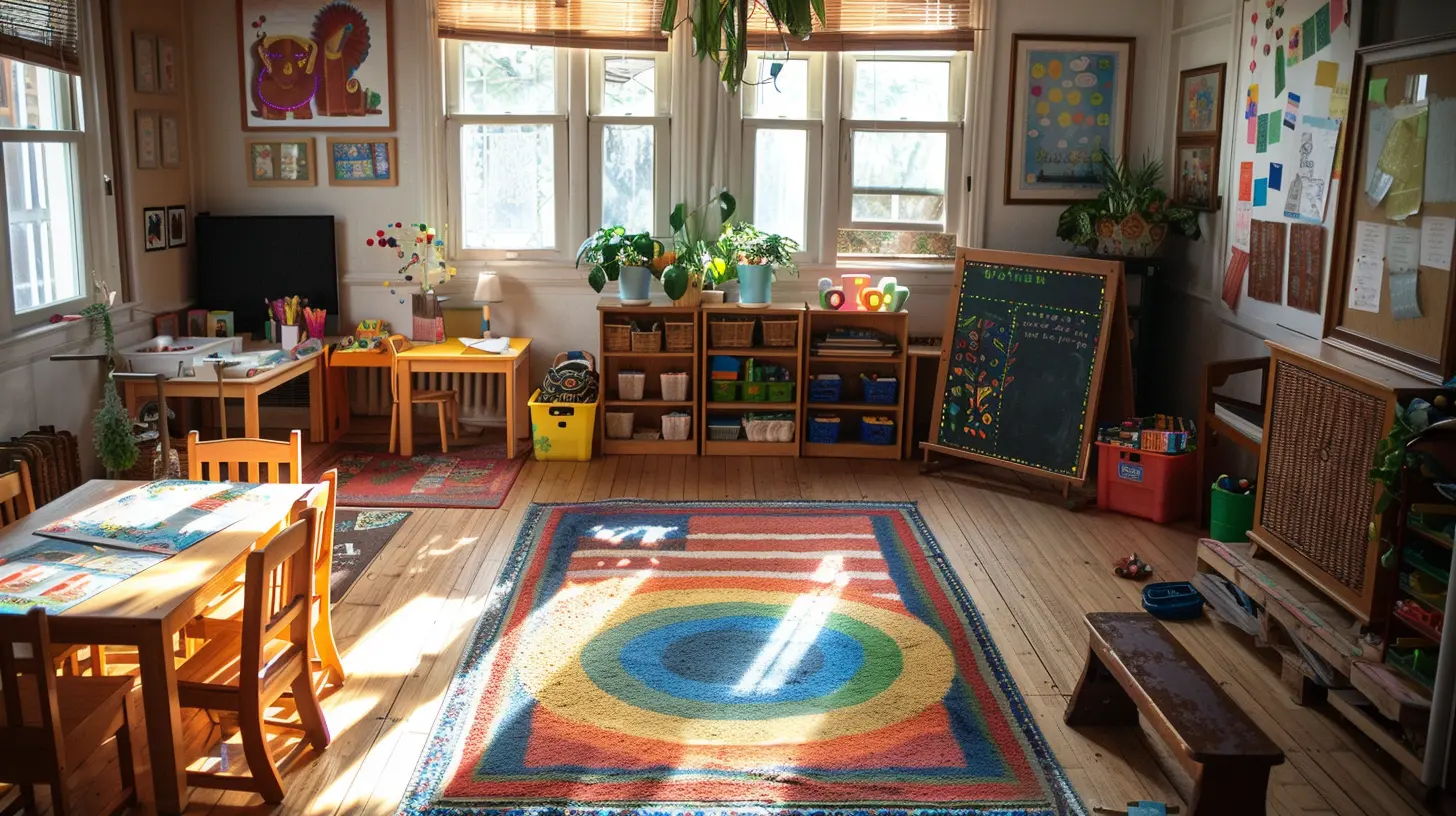Encouraging Independent Learning in Your Homeschooler
18 June 2025
Let’s be real—homeschooling isn't just about choosing the right curriculum or setting up a cute little study nook in the corner of your living room. It’s about building lifelong skills that help our kids thrive well beyond textbooks. One of the biggest gifts you can give your homeschooler is the ability to learn independently.
Sounds dreamy, right? Imagine your child flipping through books, researching topics on their own, and even creating their own projects without a gentle nudge (a.k.a. nagging) from you every five minutes. That’s the magic of independent learning. It’s like handing them a treasure map and letting them find their own gold.
So how do you encourage this beautiful beast called independent learning? Let’s dive deep!
What Is Independent Learning Anyway?
Before we start handing out action steps, let’s get clear on what we’re trying to achieve. Independent learning doesn't mean you're stepping back completely and letting your child figure everything out from scratch. It’s about guiding your homeschooler to take ownership of their learning, make decisions, pursue interests, and solve problems—without relying on you for every little thing.It’s kind of like teaching them to fish instead of just handing them a cooked meal every day. Sure, you still help with the bait and the fishing pole, but over time, they’re casting their own lines.
Why Independent Learning Matters (Especially for Homeschoolers)
You’ve probably heard the saying: “Teach a child how to think, not what to think.” That’s the heart of independent learning. But why should you care?Let’s break it down:
- Develops Critical Thinking: When kids figure things out on their own, they learn how to think logically and solve problems creatively.
- Builds Confidence: They feel accomplished when they complete tasks without constant help.
- Fosters Accountability: They learn that their education is their responsibility—pretty powerful stuff.
- Encourages a Love for Learning: When they pursue things they’re truly interested in, learning becomes exciting, not a chore.
In a homeschool setting, where flexibility and personalization are the name of the game, independent learning fits like a glove.
Start with the Right Mindset (Yours and Theirs)
Okay, truth time. Encouraging independence means letting go of a bit of control. That’s hard, right? We don’t want our kids to struggle. But here’s the twist: a little bit of struggle is part of the journey. It’s where growth happens.Talk to your child about what it means to take charge of their own learning. Explain that they’re not just “doing school” because someone told them to—they're learning skills that’ll help them rock life.
And you? You’ve got to be cool with stepping back sometimes. Not easy, but totally worth it.
Create a Routine That Encourages Autonomy
Ever tried working in chaos? It’s tough. Kids are no different. A strong routine creates a sense of stability, and within that structure, they can start making their own choices.Here’s how to build a routine that promotes independence:
- Start the Day with a Plan: Have a morning check-in where your child sets goals for the day.
- Use a Visual Schedule or Checklist: This helps them see what needs to be done without you reminding them constantly.
- Build in Breaks: Kids need time to recharge. Breaks also help them manage their own energy and focus levels.
- Reflection Time: End the day by reviewing what they accomplished—this builds self-awareness and accountability.
Think of the routine as the training wheels. Once they’ve got balance, you can ease off.
Give Them Choices (But Not Too Many)
Choice is empowering. When your homeschooler gets to decide what book to read, what science project to do, or even what order to tackle their subjects in, they're immediately more engaged.But wait—don’t throw open the floodgates. Too many choices can overwhelm. Instead, offer limited options. For example:
- “Do you want to start with math or history today?”
- “Would you rather write a story or make a video for your language arts project?”
You’re still guiding, but they’re calling some of the shots. Win-win.
Use Interest-Led Learning to Your Advantage
Here’s a secret: if your child is obsessed with dinosaurs or space or Minecraft (yes, even Minecraft!), you can turn that curiosity into a full-blown learning adventure.Interest-led learning isn’t just fun—it fuels independence. Why? Because when kids are fascinated by something, they naturally want to explore more.
Some ideas:
- Turn their interests into unit studies.
- Encourage them to create a mini research project, presentation, or even a comic book on the topic.
- Let them find their own resources (with guidance, of course).
It’s like setting them loose in a candy store—except the candy is knowledge. (Okay, maybe that analogy is a stretch, but you get the idea.)
Teach Them How To Learn (Not Just What To Learn)
As adults, we Google things, take online courses, follow tutorials, and learn from experience. That’s called being a lifelong learner. But we didn’t get there by accident.Help your homeschooler develop those same tools:
- Teach Research Skills: How to find credible information, take notes, and organize their thoughts.
- Introduce Study Techniques: Flashcards, summarizing, teaching others, etc.
- Encourage Questions: Teach them to ask deeper questions instead of just accepting information at face value.
- Model Learning: Let them see YOU learn something new. Bake a sourdough loaf, fix the sink, or try painting—and talk through your process.
You’re not just the teacher. You’re their fellow learner.
Let Them Make Mistakes (And Learn From Them)
This one’s tough, especially when you see your kid heading toward a disastrous DIY volcano project with baking soda and vinegar everywhere. But making mistakes is part of the learning process.Instead of jumping in to fix everything:
- Let them try.
- Let them fail a little.
- Then sit with them and reflect. “What do you think went wrong? What can you try differently next time?”
This is how problem-solvers are born. Every inventor, artist, and innovator had to learn by trial and error. Your homeschooler is no different.
Use the Right Resources
Sure, traditional textbooks have their place, but they aren’t always independent-learning-friendly. Look for materials that encourage exploration and thinking instead of rote memorization.Some awesome tools to consider:
- Online learning platforms like Khan Academy, Outschool, or Coursera.
- Self-paced workbooks that your child can follow on their own.
- Project-based learning kits like KiwiCo.
- Audiobooks and podcasts to make learning more accessible (great for auditory learners!).
And never underestimate the power of a good ol’ library card.
Encourage Goal-Setting (And Celebrate Progress)
Setting goals gives kids a target to aim for. It could be as simple as finishing a book, building a volcano model, or writing a story.Teach them to set SMART goals—Specific, Measurable, Achievable, Relevant, and Time-bound. I know, that sounds very grown-up. But if you can show them how to break big tasks into smaller steps, they’ll feel way less overwhelmed.
And when they hit a goal? Celebrate it! High-fives, stickers, an extra 30 minutes of screen time—whatever works for your family. Kids love recognition.
Be Available, But Not Overbearing
Let’s not kid ourselves—your homeschooler still needs you, just not hovering like a helicopter.The trick is to shift your role:
- You’re the coach on the sidelines, not the player in the game.
- Provide support, encouragement, and resources—but let them take the lead.
- Keep the lines of communication open so they know they can come to you, but don’t jump in at every struggle.
Give them room to soar—even if they stumble a bit on takeoff.
Real Talk: It Takes Time
Nope, this won't happen overnight. But every step toward independence is a win. Some days, your child will amaze you with their initiative. Other days, you’ll find them upside down on the couch eating crackers instead of working on their history project.That’s okay.
Independent learning isn’t a magic switch—it’s a muscle. And just like any muscle, it gets stronger with use.
Final Thoughts
Encouraging independent learning in your homeschooler isn’t about creating little geniuses or expecting them to run their entire education solo. It's about fostering curiosity, confidence, and a sense of ownership over their learning journey.Your job? Be the guide, cheerleader, and occasional bumpers in the bowling lane.
So don’t stress if it doesn’t all click right away. Progress over perfection, always.
Now, go grab that coffee, take a deep breath, and remind yourself—you’re doing an incredible job. Your kids are lucky to have you on this journey.
all images in this post were generated using AI tools
Category:
HomeschoolingAuthor:

Liam Huffman
Discussion
rate this article
2 comments
Serenity Kline
Encouraging independent learning fosters confidence and critical thinking in your homeschooler. Utilize diverse resources, set clear expectations, and create a supportive environment where curiosity thrives. Celebrate achievements to boost motivation!
November 30, 2025 at 4:01 AM

Liam Huffman
Thank you for your insightful comment! I completely agree—supporting independence through diverse resources and a nurturing environment is key to fostering confidence and critical thinking in our homeschoolers. Celebrating their achievements is essential for maintaining motivation!
Ford McClintock
Fostering independence nurtures curiosity; let your homeschooler explore and learn at their pace.
June 21, 2025 at 2:36 AM

Liam Huffman
Absolutely! Encouraging independence allows children to follow their interests and develop a lifelong love of learning.


